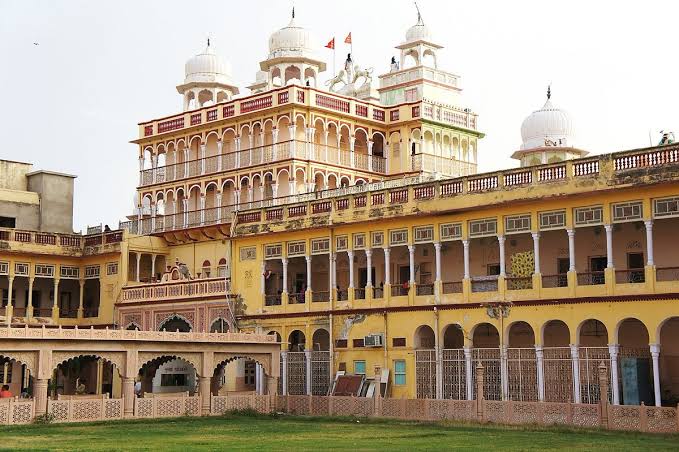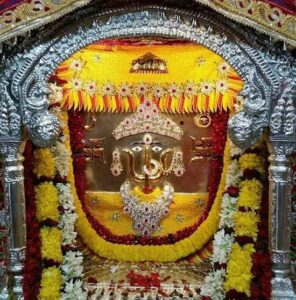
Nestled in the heart of Jhunjhunu district in Rajasthan, the Rani Sati Temple stands as a divine testament to devotion and cultural richness. Dedicated to Rani Sati, a legendary Rajasthani queen, this temple is not just a place of worship; it is a symbol of resilience, faith, and a unique blend of folklore and spirituality.

Historical Tapestry
The origin of the Rani Sati Temple can be traced back to the 16th century when Narayani Devi, also known as Rani Sati, lived during the reign of Akbar. Widowed at a young age, Rani Sati chose the path of self-immolation (sati) after her husband’s demise. The temple was constructed at the site where this selfless act occurred, turning it into a spiritual pilgrimage destination over the centuries.
Unique Architecture
The temple’s architecture seamlessly blends traditional Rajasthani and Mughal styles. The intricately carved spires, adorned with vibrant colors, rise elegantly against the desert backdrop. The sanctum sanctorum houses a mesmerizing idol of Rani Sati, with devotees believing in her divine presence and miraculous powers.
The Marvel of No Shadows
One of the most intriguing aspects of the Rani Sati Temple is its claim of having no shadows on its premises. As the legend goes, the temple complex was constructed in such a way that, irrespective of the time of day, the temple structures never cast shadows. While scientific skepticism may challenge this belief, it adds a layer of mystique to the temple and attracts curious visitors from far and wide.
Devotee Traditions and Rituals
Devotees flock to the Rani Sati Temple to seek the queen’s blessings for marital bliss, prosperity, and protection from evil. The annual “Sati Mata Ji Ka Mela” attracts a multitude of pilgrims who participate in processions, religious ceremonies, and cultural events. The vibrant atmosphere during the festival showcases the deep-rooted cultural heritage of Rajasthan.
Temple Trust and Social Initiatives
The Rani Sati Temple is managed by the Marwari community through a trust that oversees its operations and maintenance. Beyond its religious significance, the temple is actively involved in various social initiatives, including education, healthcare, and community development. This reflects a broader commitment to social welfare and the well-being of the surrounding region.
Historical Frescoes and Artifacts
The temple walls are adorned with ancient frescoes depicting scenes from the life of Rani Sati, Rajasthani folklore, and religious motifs. These exquisite artworks provide a glimpse into the rich cultural tapestry of the region. Additionally, the temple houses a collection of artifacts, including ancient scriptures and offerings from devotees, further enriching its historical significance.
The Eternal Flame
Central to the temple’s sanctum is the eternal flame, symbolizing the undying spirit of Rani Sati. This perpetual flame is meticulously tended to by the temple priests and is considered a representation of the queen’s divine presence. Devotees believe that seeking blessings from this eternal flame brings good fortune and protection.
Tourist Attraction and Cultural Heritage
The Rani Sati Temple is not only a revered pilgrimage site but also a prominent tourist attraction. Its architectural grandeur, cultural significance, and the intriguing legend surrounding the absence of shadows make it a captivating destination for history enthusiasts, spiritual seekers, and curious travelers exploring Rajasthan’s cultural landscape.
In conclusion, the Rani Sati Temple is a harmonious blend of history, spirituality, and cultural heritage. Its vibrant traditions, unique architectural features, and the enduring legacy of Rani Sati continue to draw pilgrims and tourists, making it a timeless symbol of faith and cultural richness in the heart of Rajasthan.















